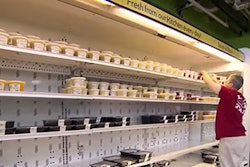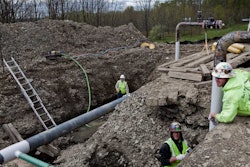According to some reports, over the next five years, long-time manufacturing leaders including the United States, Germany and Japan will be continually challenged to maintain their competitive edge against emerging nations such as China, India and Brazil Some manufacturing facilities may already being experiencing challenges. What can a facility do to remain competitive in today’s fast-paced and global manufacturing world? Seeking out the best talent, upgrading to state-of-the-art equipment and developing efficient and sustainable practices are all ways to remain competitive, increase productivity and grow your market share.
Industry surveys indicate that the average manufacturing facility can reduce its energy consumption by 10 to 20 percent by implementing energy efficient technologies and practices. The recovery of wasted industrial energy is more than just an opportunity to improve financial performance in a competitive global marketplace. Energy savings open up opportunities for manufacturers to increase sustainable practices, invest in sustainability programs and partners and make wiser choices that contribute to a more sustainable industry.
Energy Use and Compressed Air
Of all the energy used in manufacturing, compressed air systems have the largest potential for improvement. It is estimated that compressed air systems in the U.S. consume approximately 30 billion kilowatt-hours per year, and account for $3.2 billion in wasted energy costs annually due to preventable maintenance issues and inefficient operations. Compressed air production typically accounts for up to 40 percent of a facility’s total energy consumption and represents approximately 80 percent of the overall cost of a compressed air installation; therefore, when the compressed air system is optimized for energy efficiency, the entire operation benefits.
Knowing and addressing your facility’s energy consumption is vitally important to sustainable manufacturing, and not just because of the capricious nature of energy prices. There is a growing global emphasis on conservation and environmental stewardship, and energy represents a pressure point that has businesses, governmental agencies and the general public zeroing in on sustainable practices. This concern over energy is forcing industries to reevaluate their energy options, thus creating a demand for innovative and energy efficient solutions across the board.
Sustainable manufacturing is more than just an industry “buzzword;” rather, sustainable manufacturing starts with a careful look at the energy usage of the largest energy consumers in the manufacturing facility. The following strategies represent actionable items to increase sustainability and energy savings that can be implemented without interrupting today’s 24/7 manufacturing schedules.
Energy Audits Reveal Opportunities for Improvements
A typical compressed air installation often reflects the history of a company through expansion and upgrades. However, this doesn’t always add up to the most cost-effective or efficient compressed air system. An optimization specialist or energy auditor can look at the entire compressed air installation, from air demand, supply and distribution, to identify the areas that represent the most energy savings potential.
There are three general types of audits. A basic audit, often referred to as “Walk the Line,” includes a visual inspection of the compressed air system and is often available from compressor manufacturers at no charge. Manufacturers would do well to take advantage of this type of audit on a regular basis to identify areas for improvement.
Data logging involves performance tracking of the compressor system for a minimum of seven days which often reveals if the compressor is correctly sized or if it is operating at its optimal CFM output. While data logging does come with a cost, local utility providers often offer rebates or incentive programs to companies that reduce energy consumption.
While sporting a heftier price tag, typical savings from a full system audit can range from 30 to 50 percent when audit recommendations are put into practice. Because a full system audit often includes air measurement of compressed air demand, air leak detection, control and air quality, the benefits of implementing recommended equipment and strategies—lower energy costs and higher production efficiency—usually pay for the investment.
Remote Monitoring: A Vital Step toward a Sustainable Future
Once a facility has taken the steps to understand its energy usage, production inefficiencies and areas for improvement and has invested in recommended equipment upgrades, adding remote monitoring technology is one of the most effective strategies to help facilities avoid downtime, optimize energy usage and move toward a more sustainable future.
Remote monitoring of compressed air data will provide transparency into a compressed air network from the supply side through distribution. Logging critical parameters from the machine information network is the only valid approach to show the current energy performance of the installation. These parameters include, but are not limited to, power, flow and pressure. Because remote monitoring technology is constantly gathering operating data from the connected machines, it provides industry professionals with the information they need to proactively maintain maximum uptime (e.g. by identifying potential leaks from changes in pressure) and reveals where production can be optimized through analysis and simulation.
Knowing exactly how the system is running makes identifying ways for improvement much easier, and detailed analysis on a variety of performance indicators helps determine energy peaks and valleys to maximize efficiency. When facilities have clear access to system performance data, improving system usage and reducing energy consumption costs is much easier to accomplish.
Prioritizing energy efficiency projects, choosing compressed air equipment that can do more work with less energy, and optimizing efficiency and maintenance strategies through remote monitoring, are all integral to meeting or exceeding sustainable manufacturing goals. It’s simple: the pathway to a more sustainable future starts with compressed air optimization.























